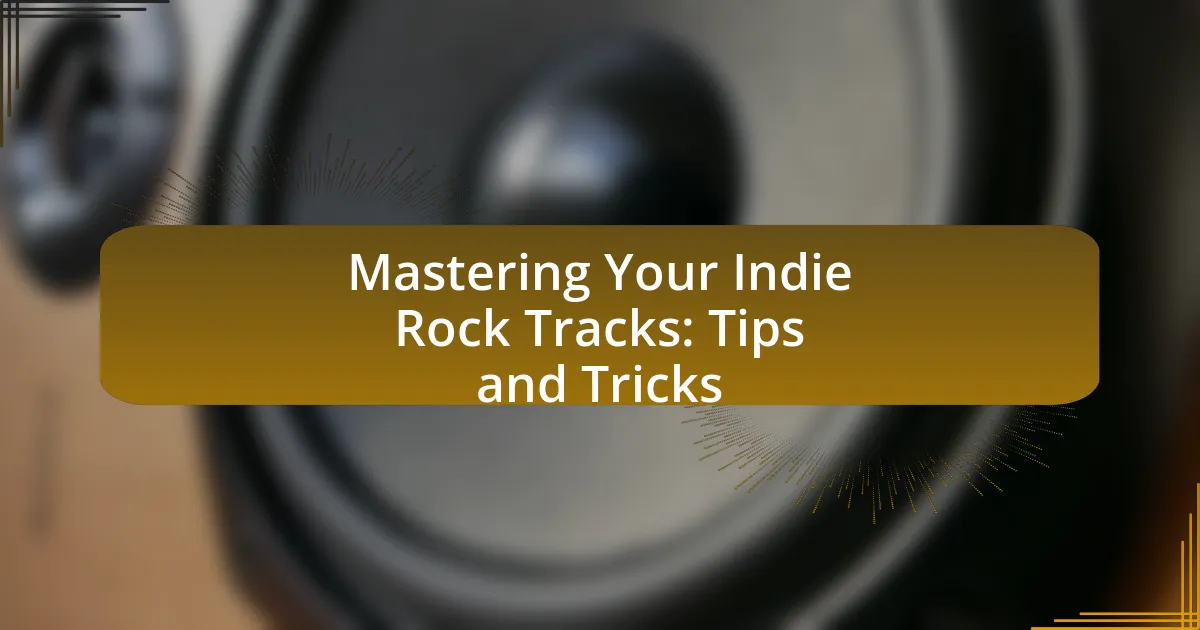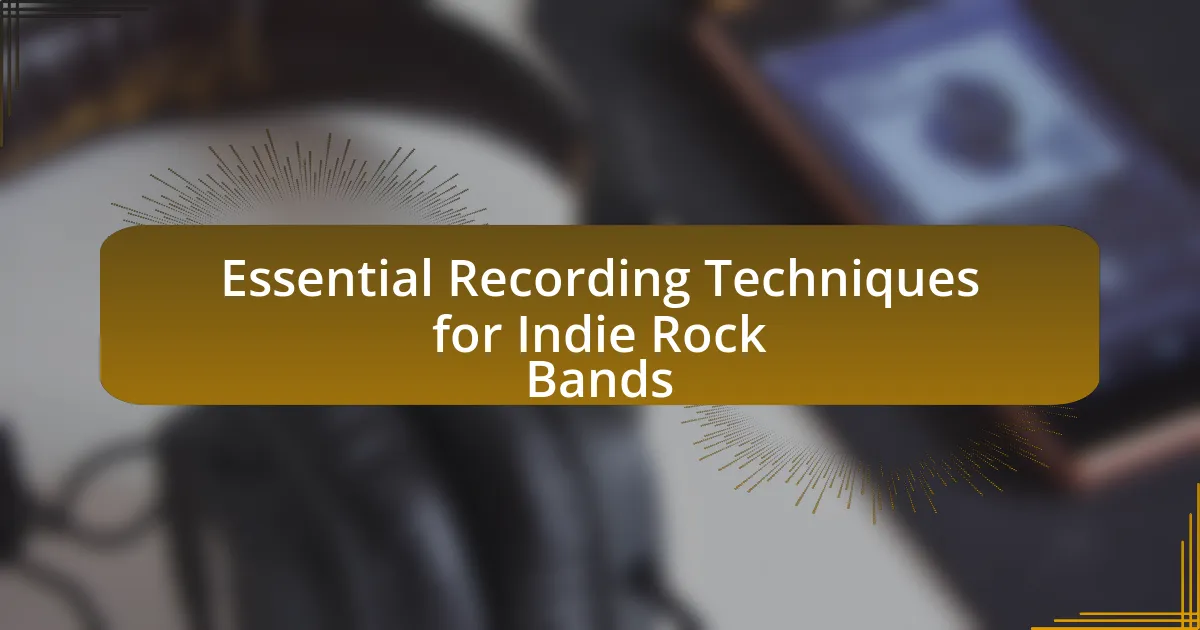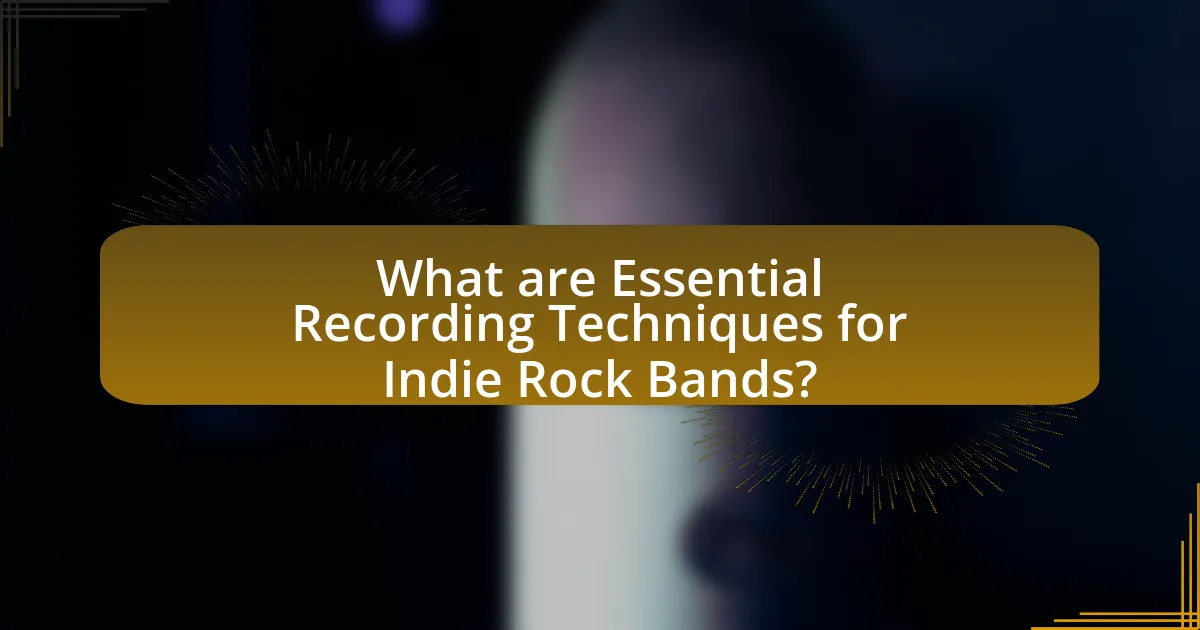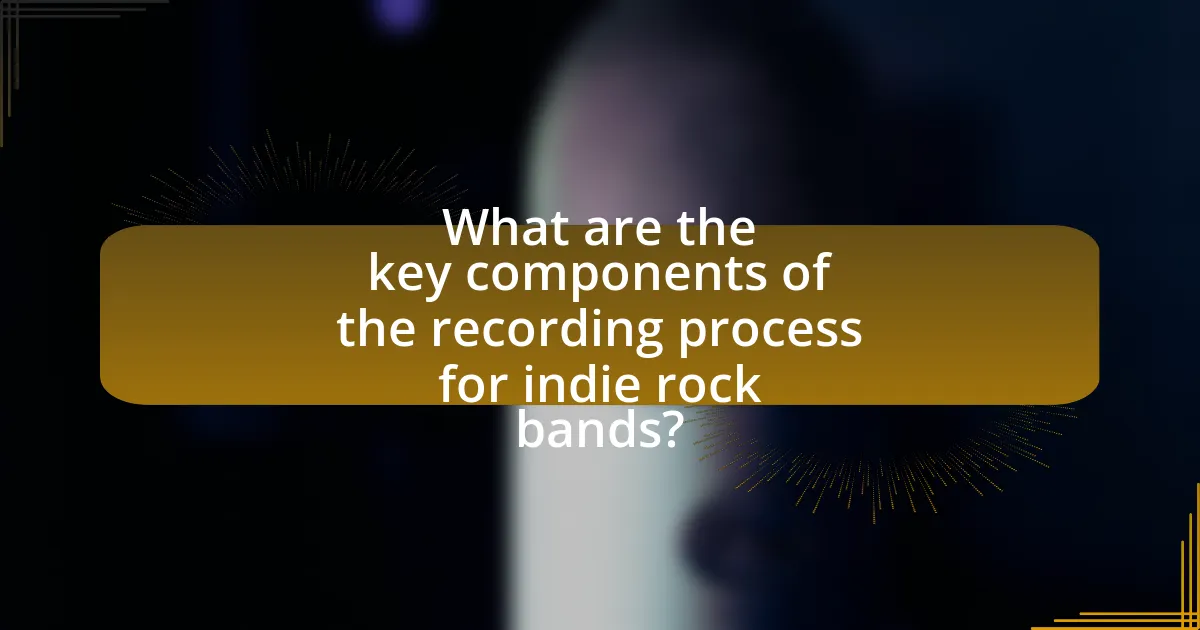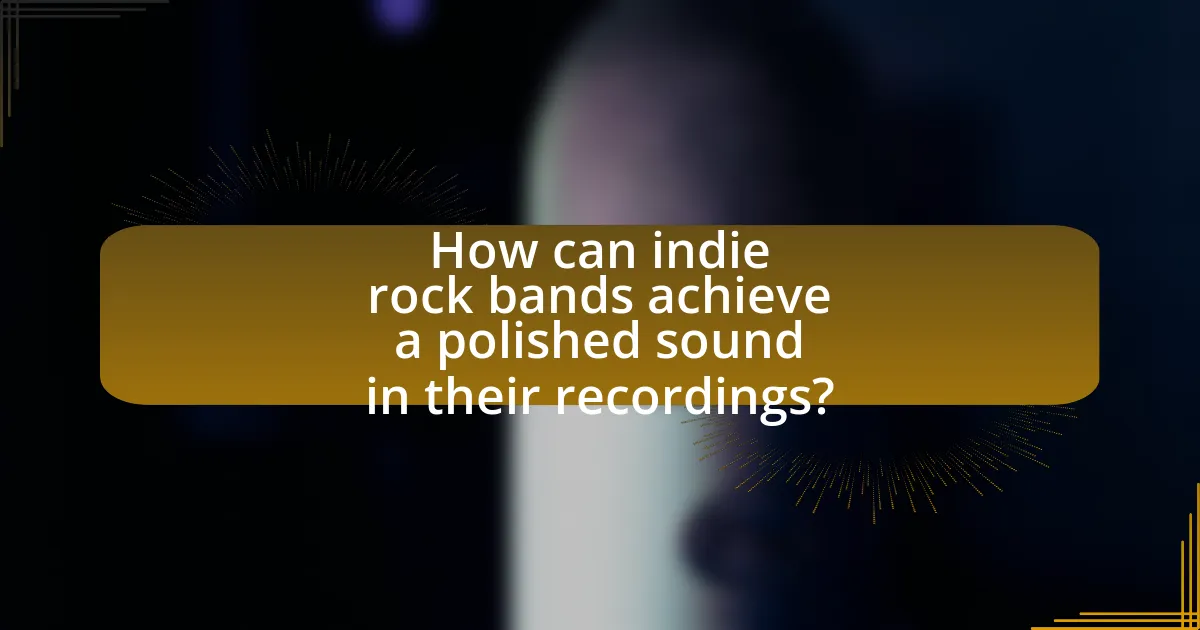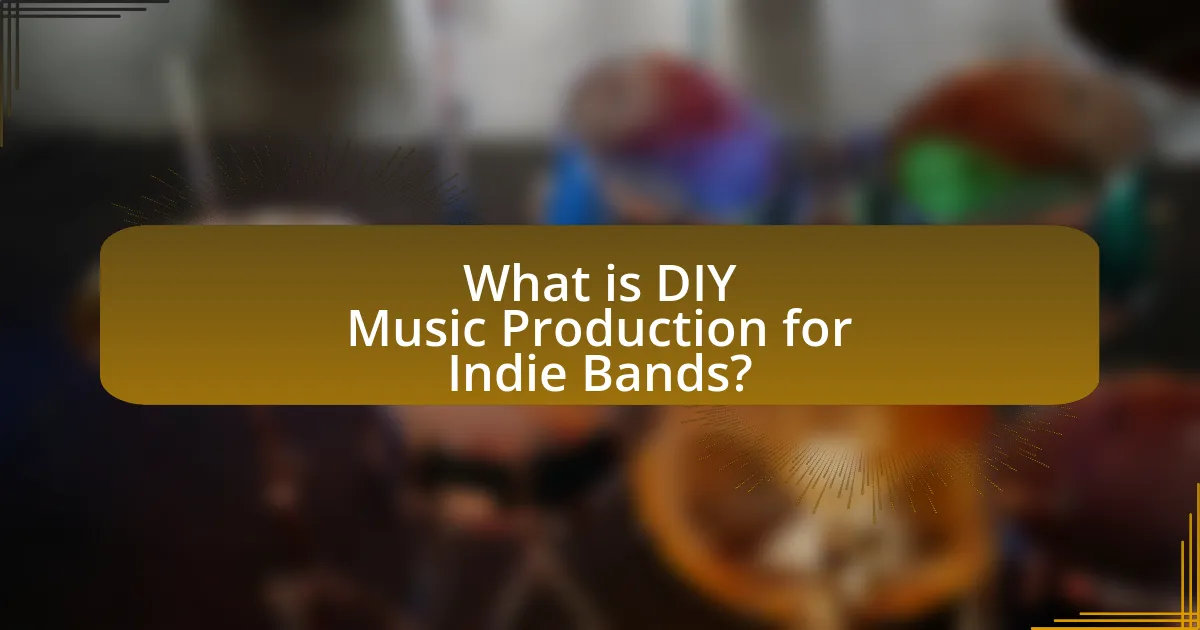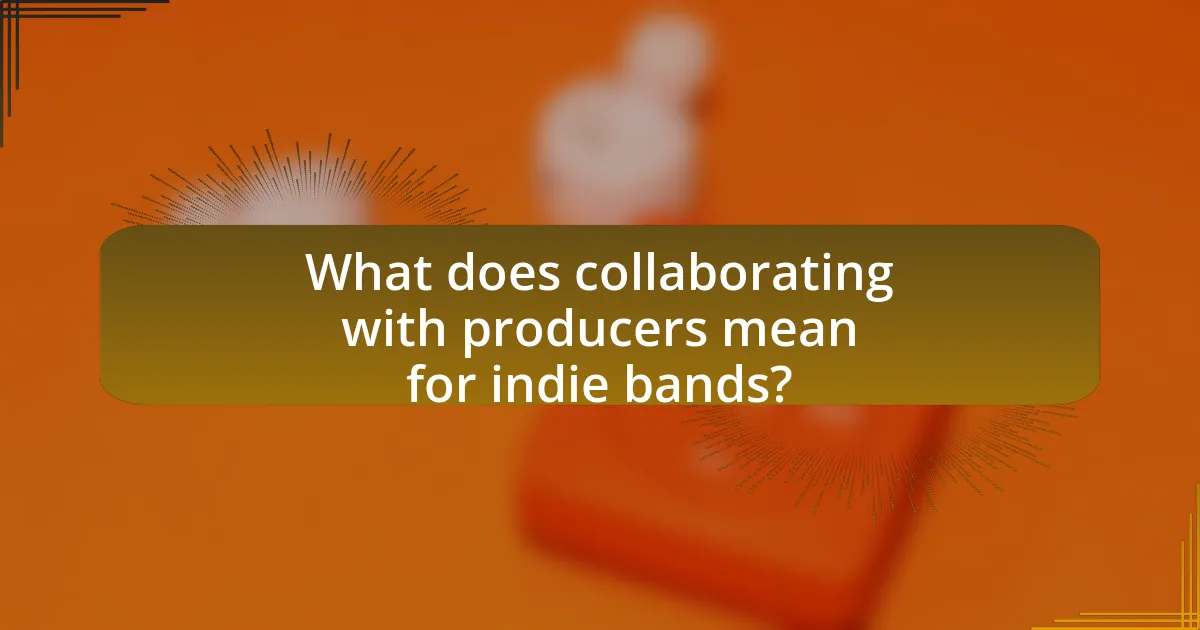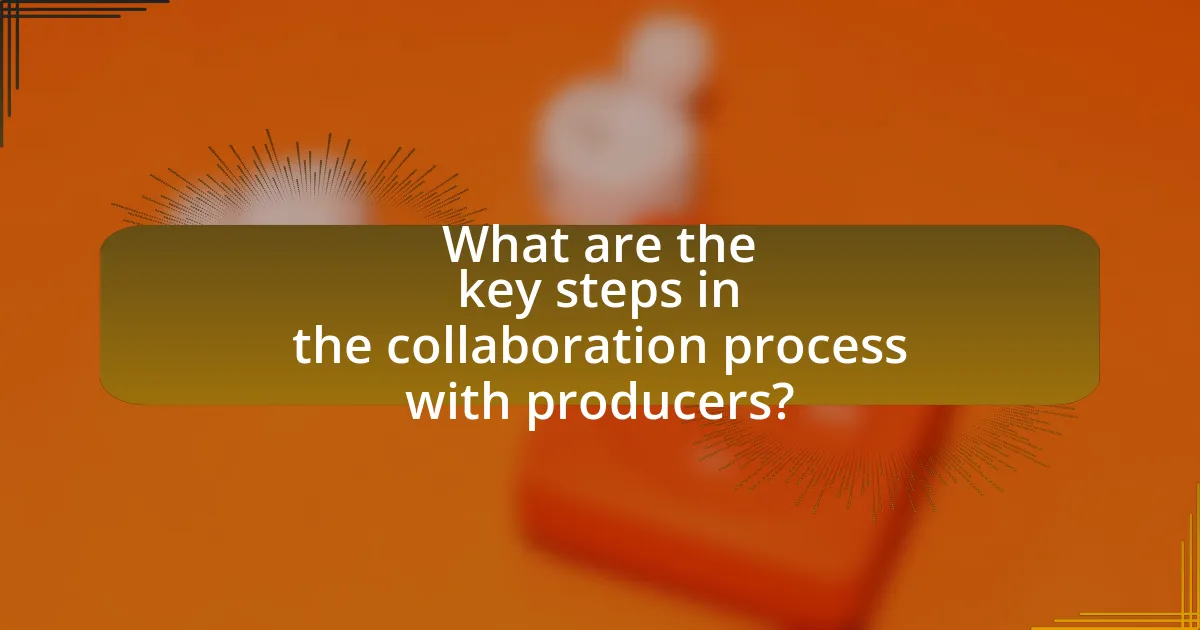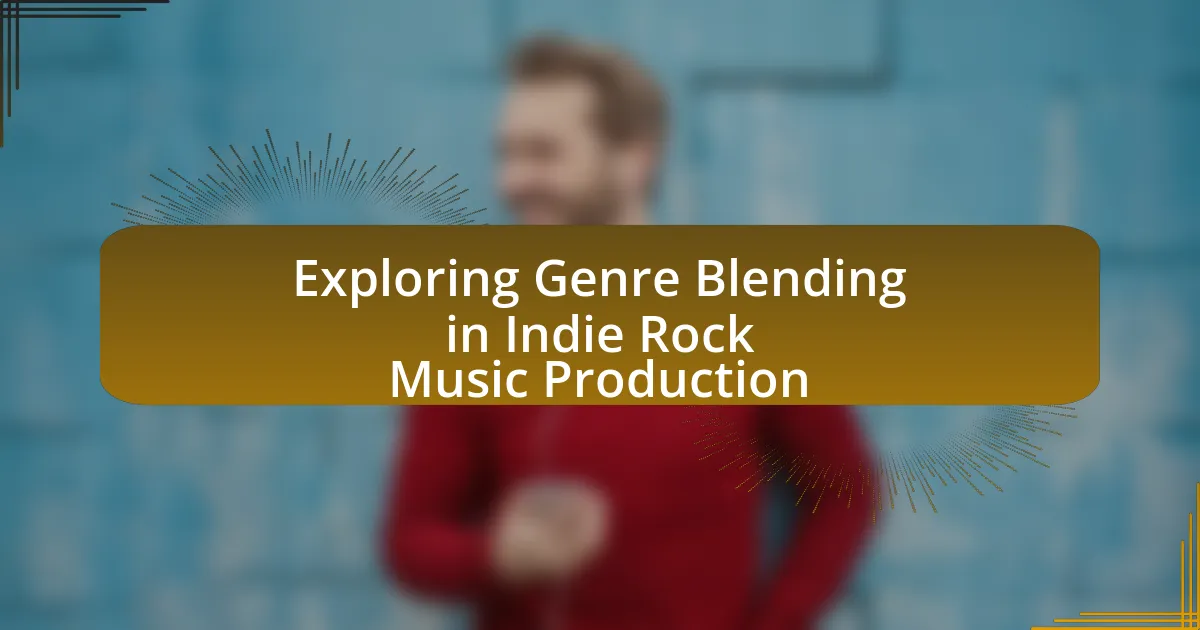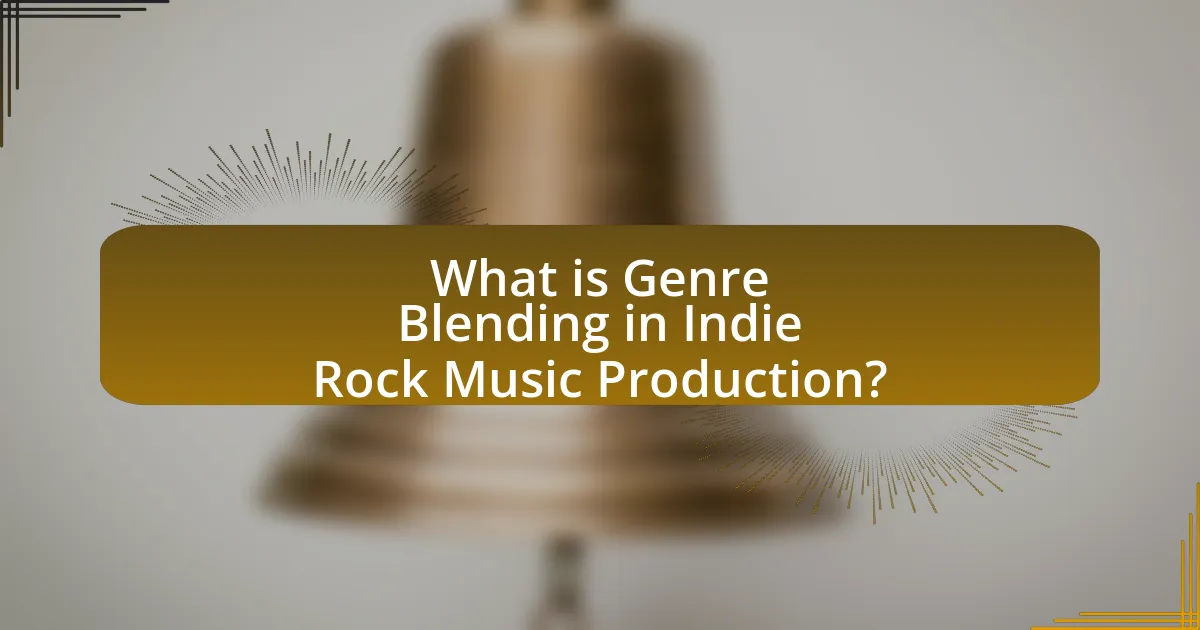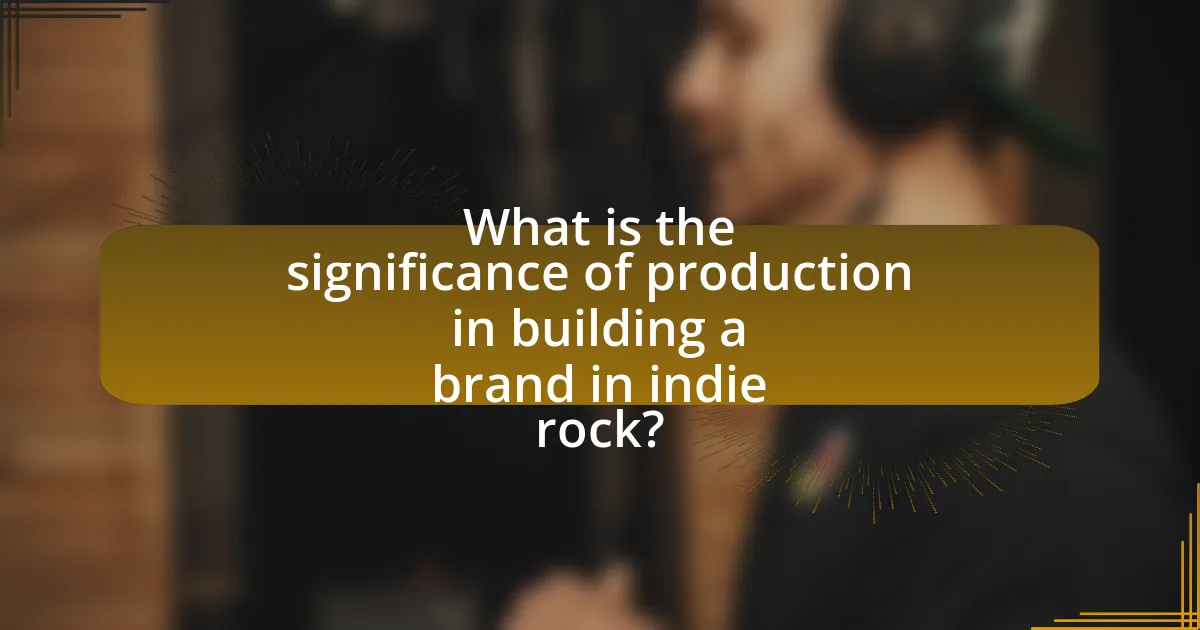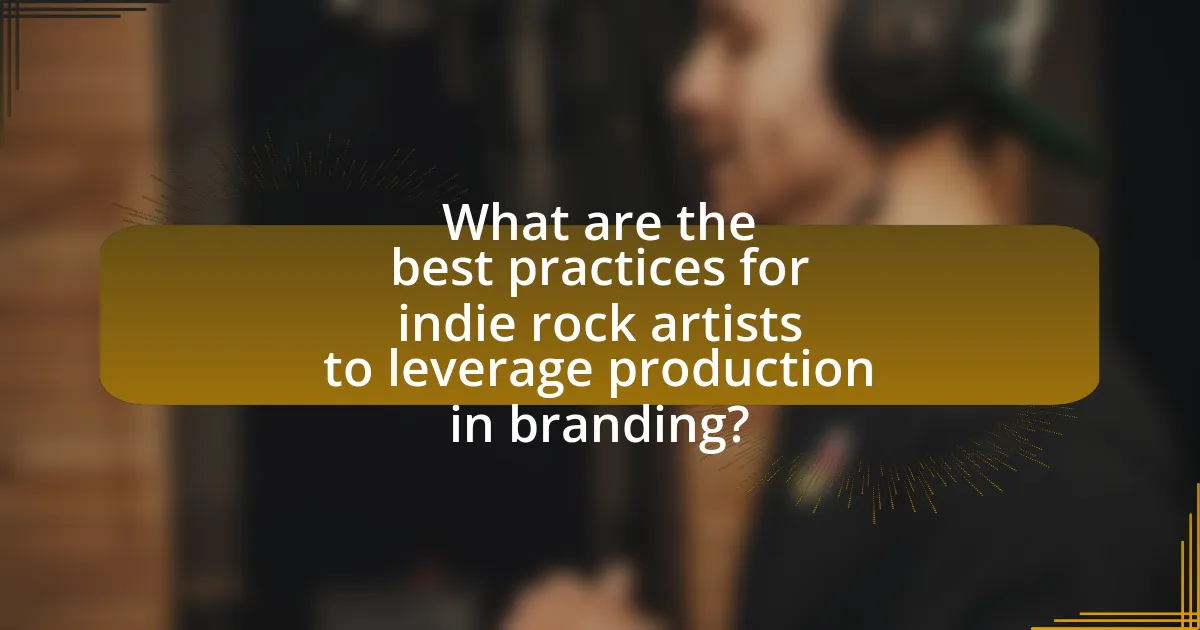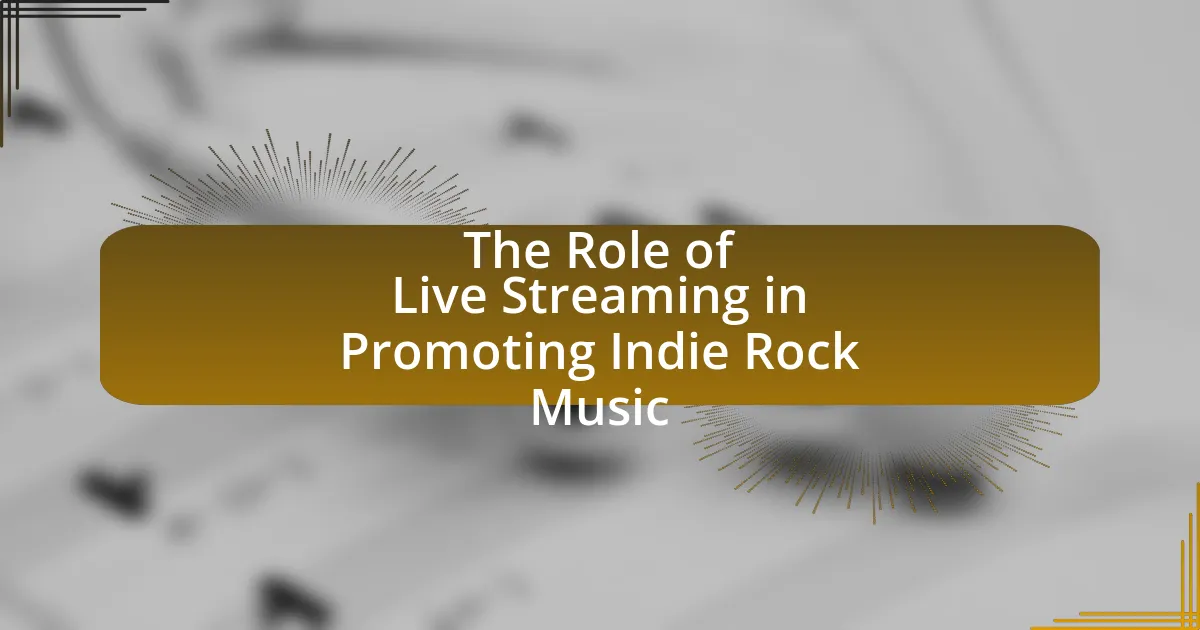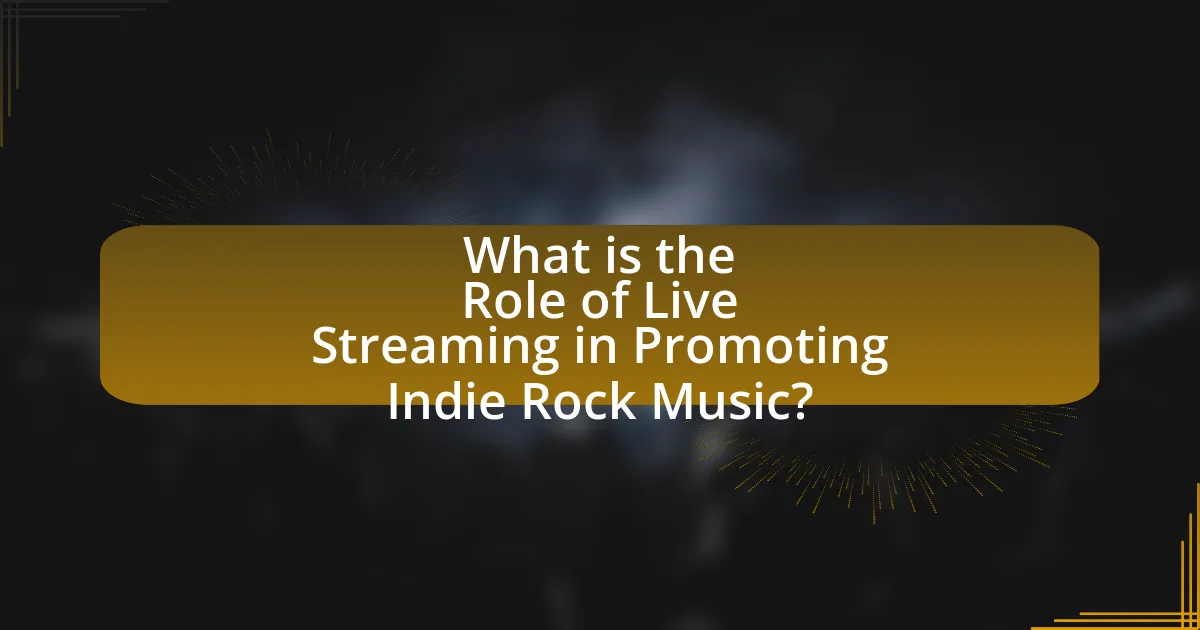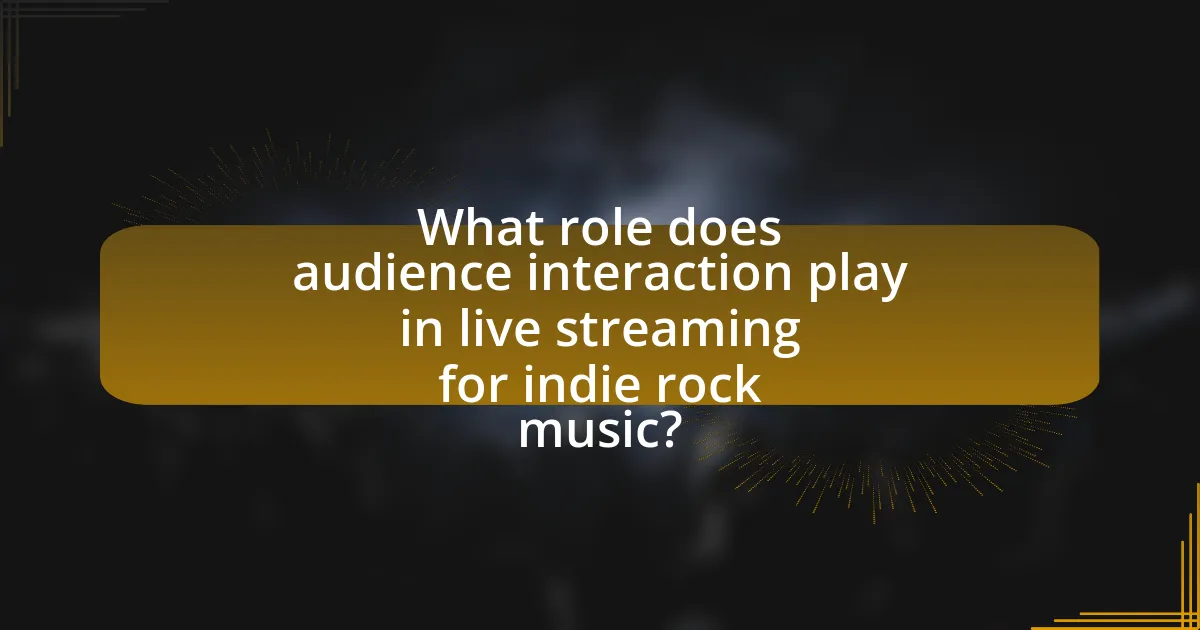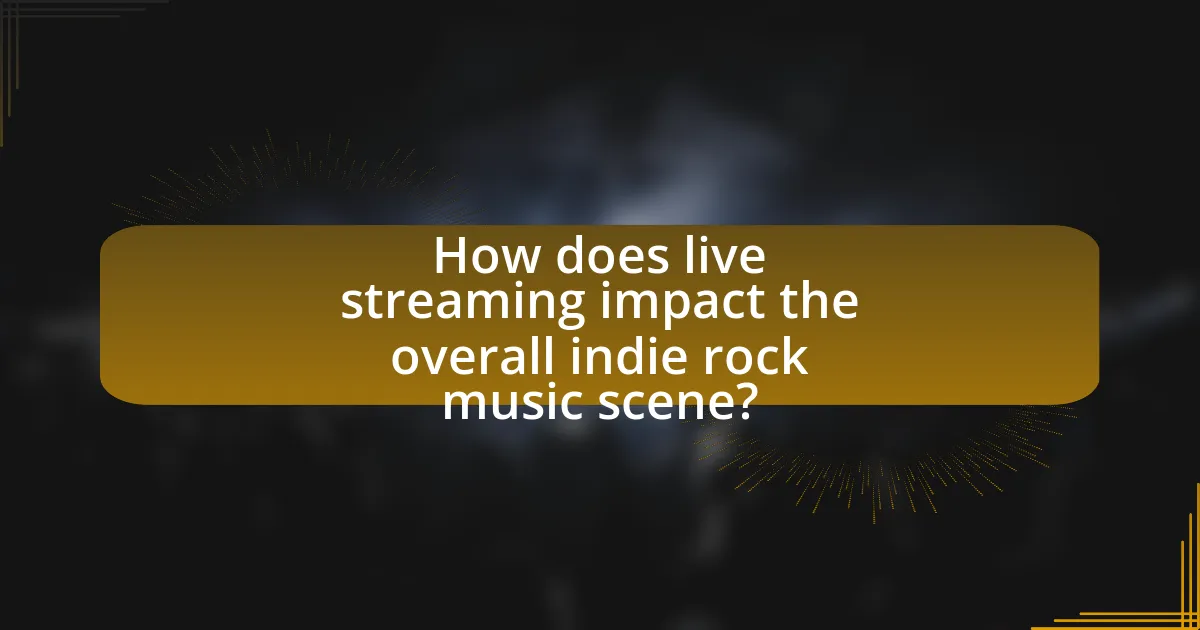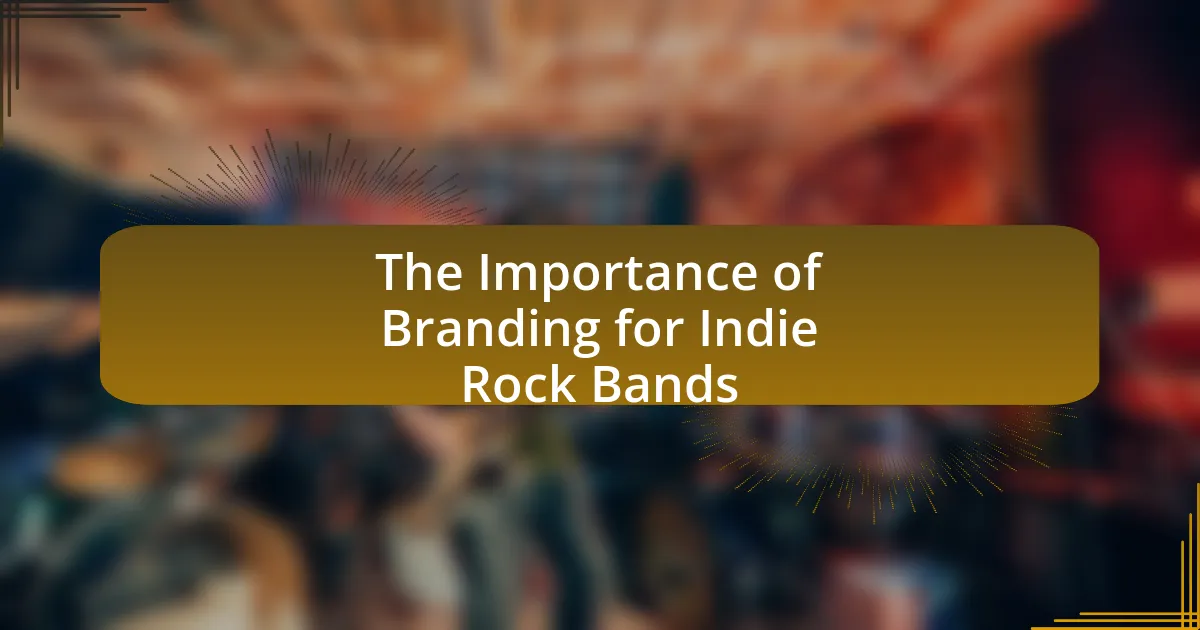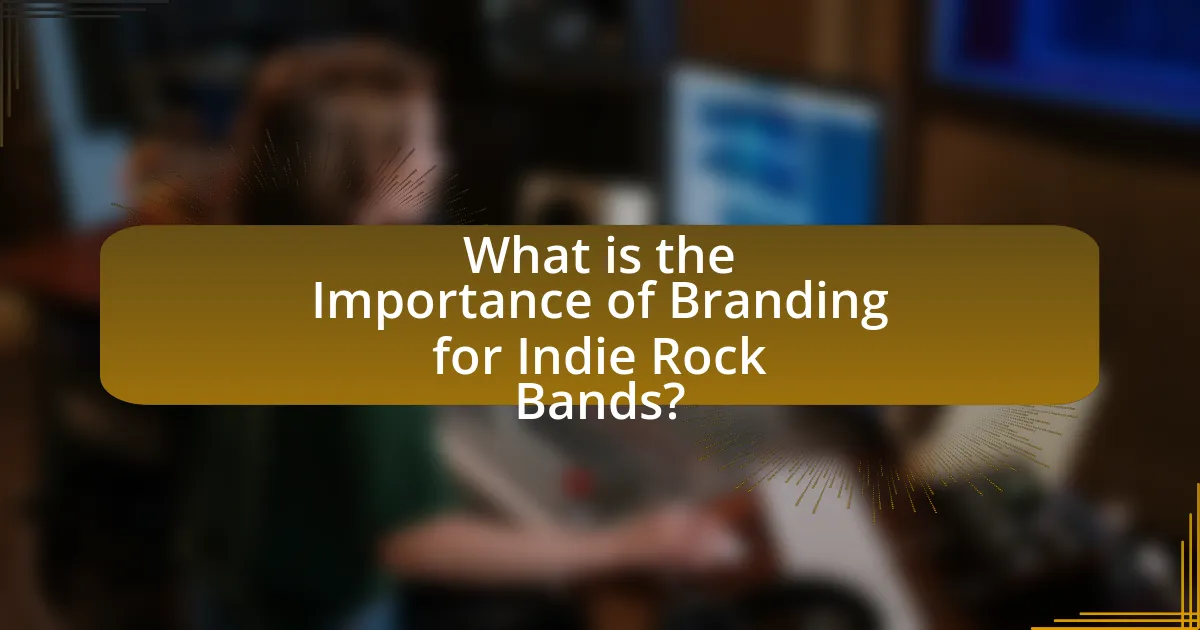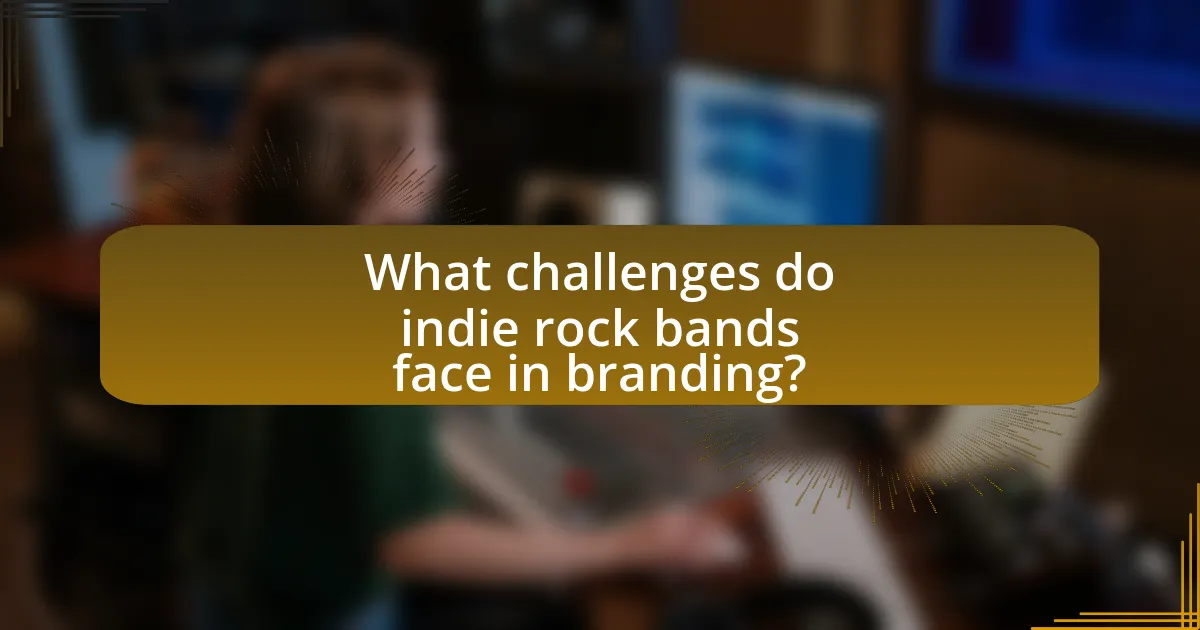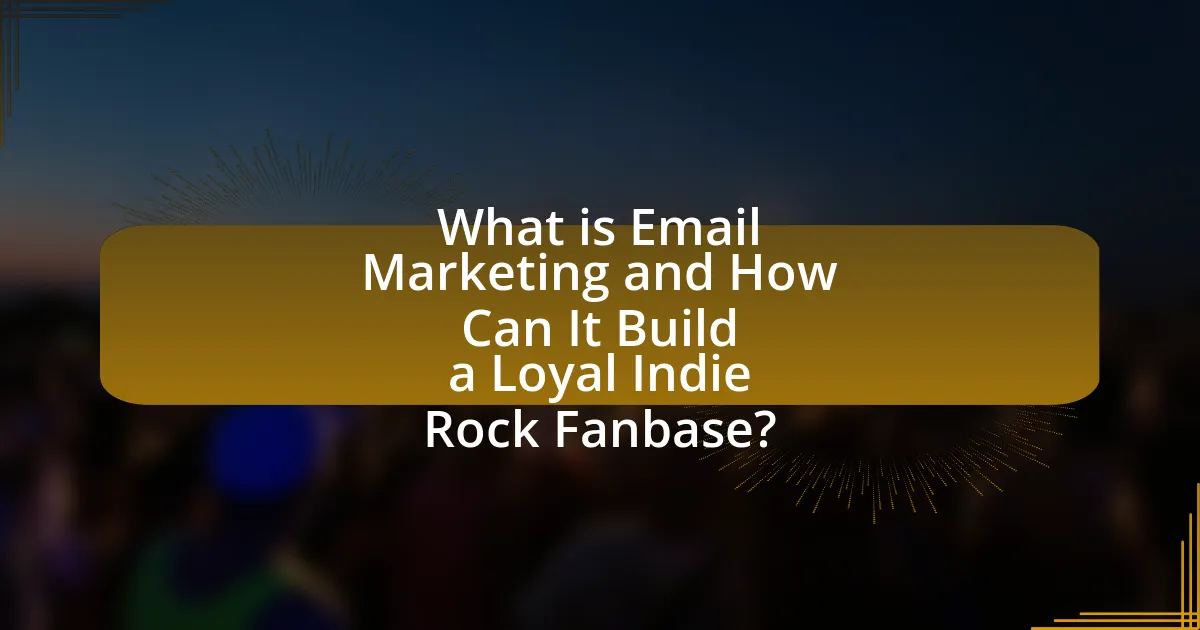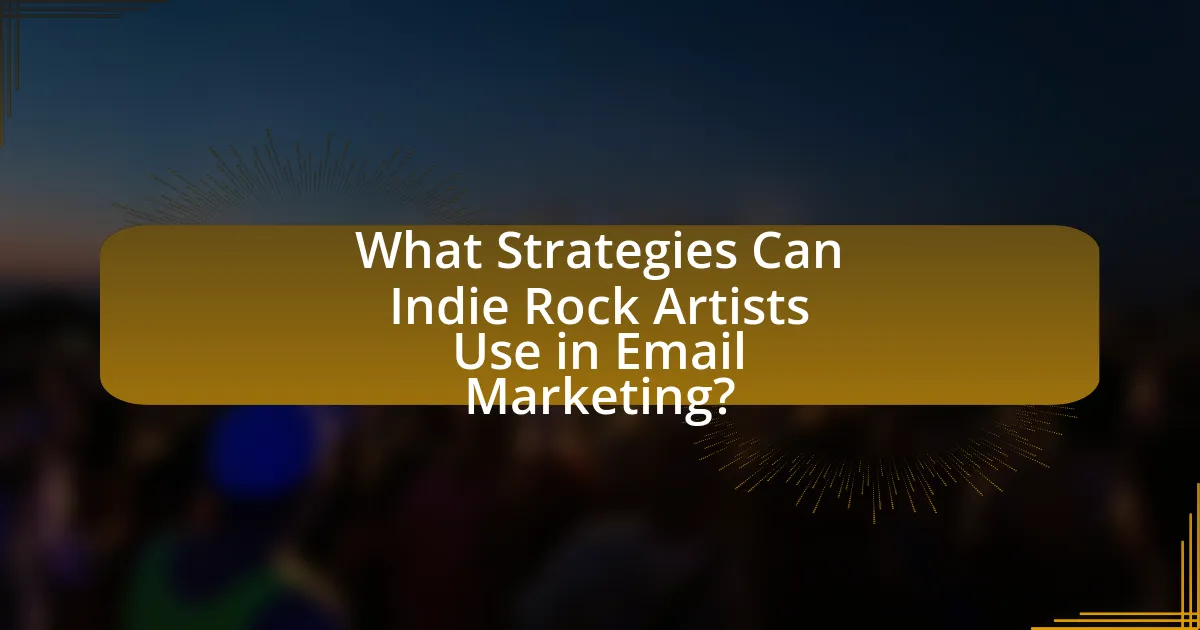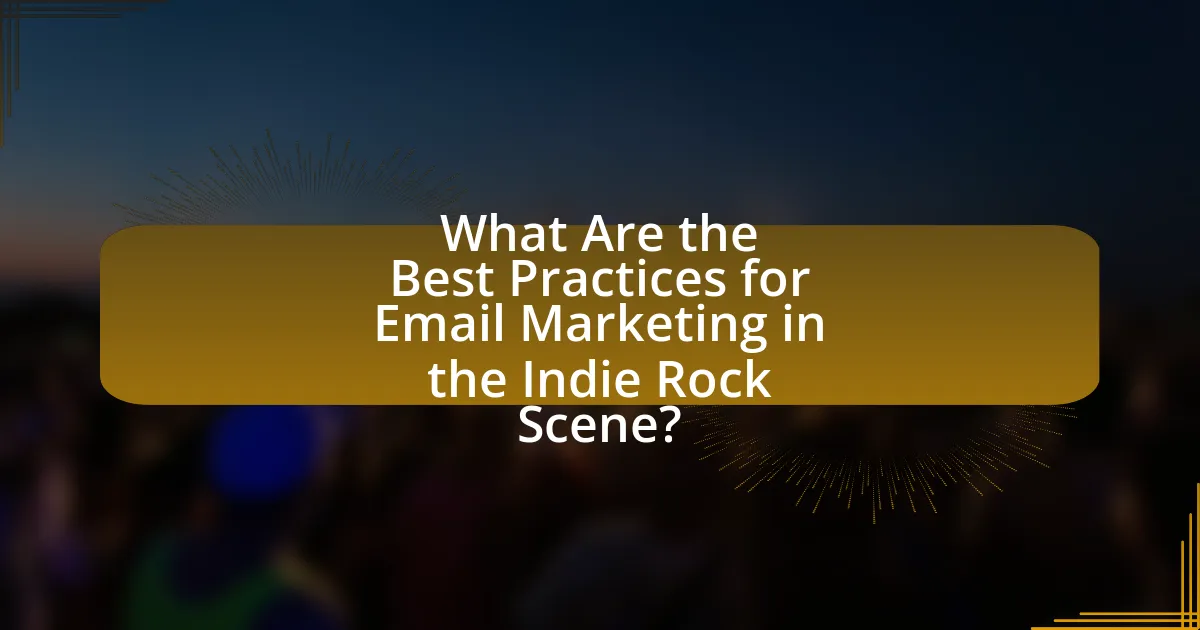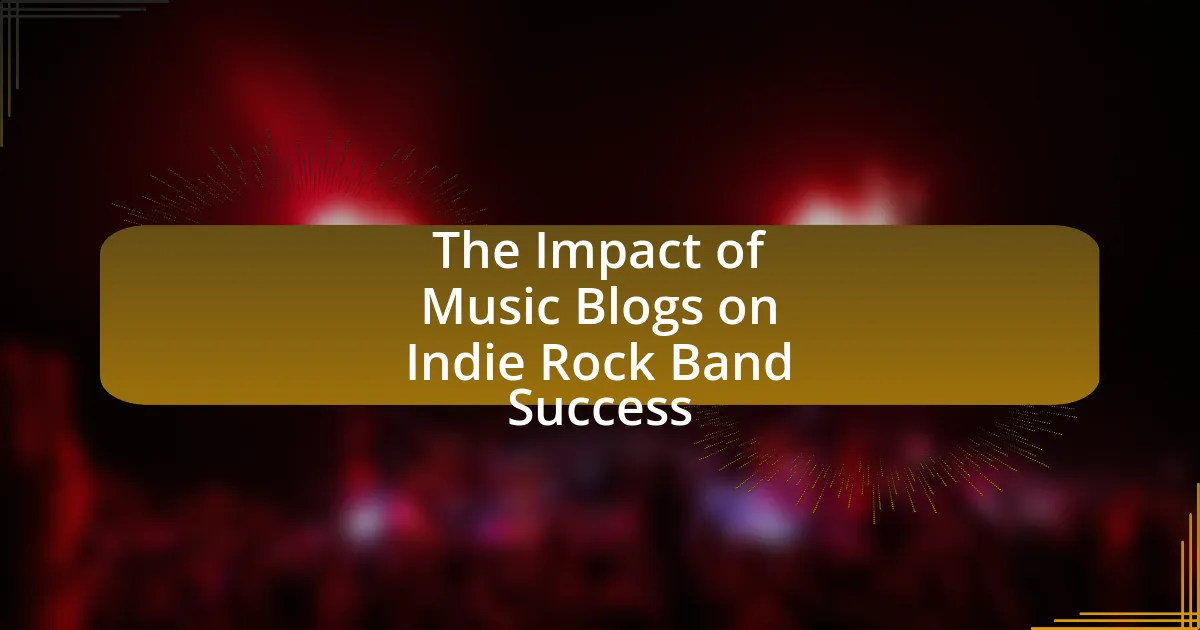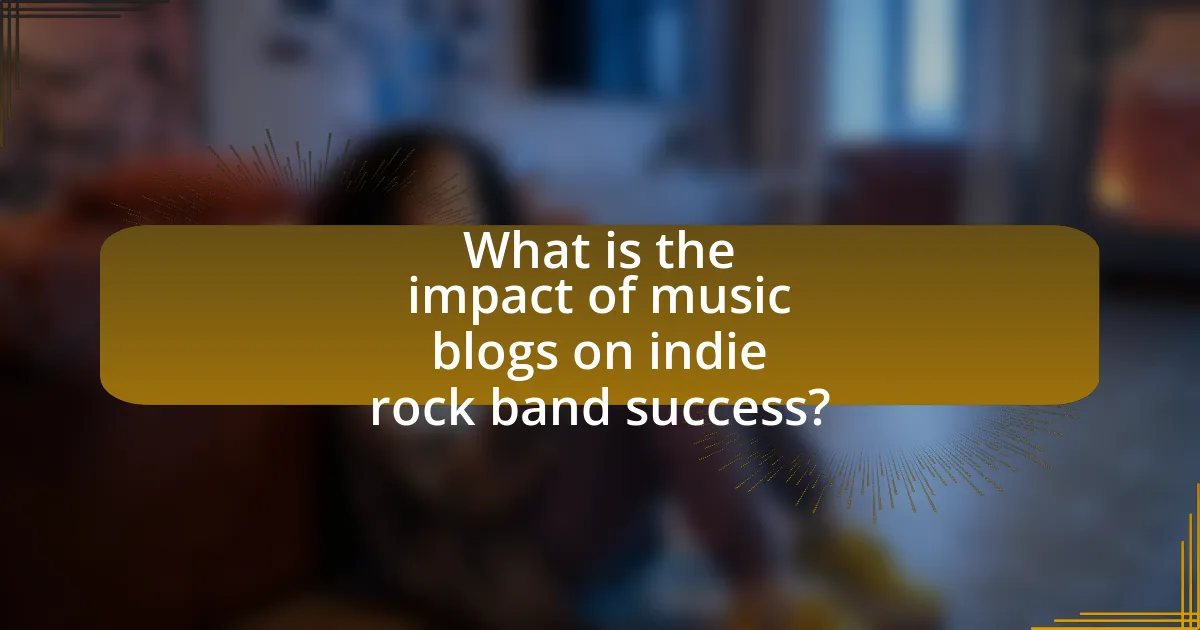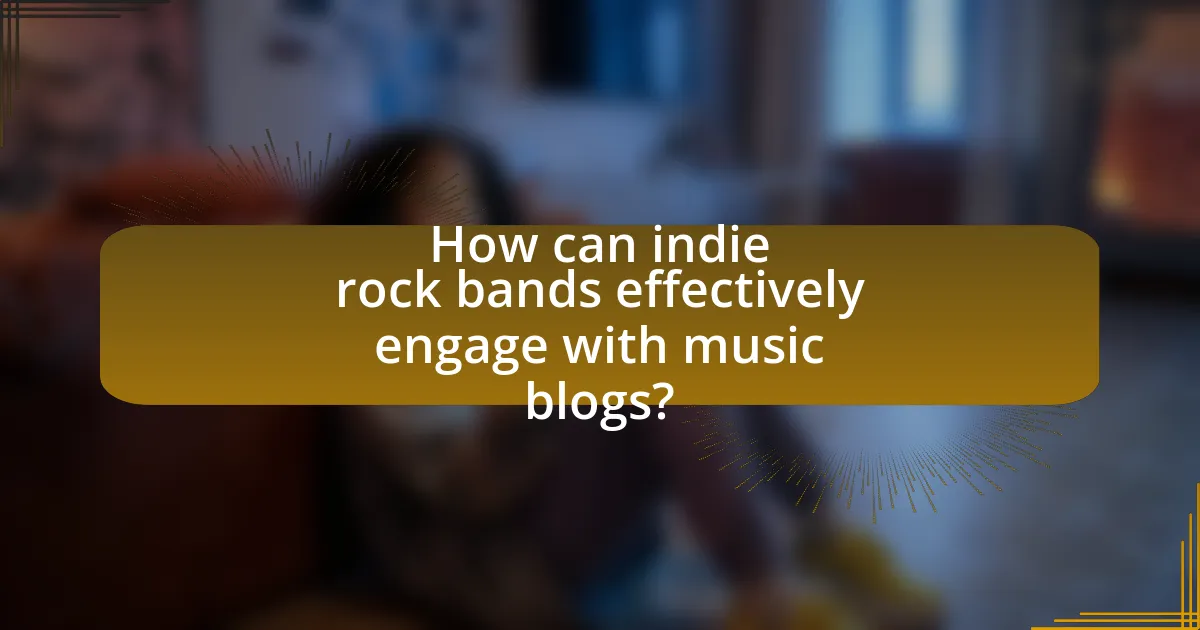Mastering your indie rock tracks is a critical final step in the audio production process that ensures mixed tracks are polished and ready for distribution. This article outlines the differences between mastering and mixing, detailing the key stages involved in mastering, such as equalization, compression, and limiting, which enhance sound quality and consistency across various playback systems. It also discusses essential tools and software for mastering, common mistakes to avoid, and best practices for preparing tracks, emphasizing the importance of reference listening and feedback in achieving a professional sound. By following these tips and techniques, musicians can significantly improve the quality and commercial viability of their indie rock recordings.
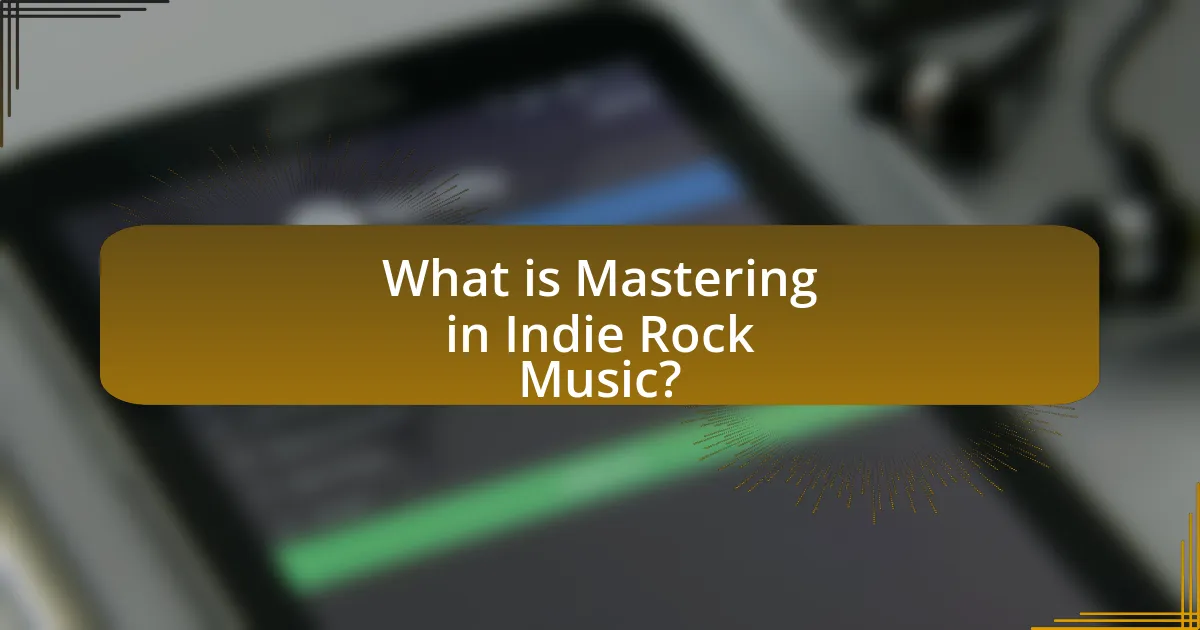
What is Mastering in Indie Rock Music?
Mastering in indie rock music is the final step in the audio production process, where the mixed tracks are polished and prepared for distribution. This process involves adjusting the overall sound, ensuring consistency across all tracks, and enhancing the audio quality to meet industry standards. Mastering typically includes equalization, compression, limiting, and other techniques to optimize the sound for various playback systems. The goal is to create a cohesive listening experience that translates well across different formats, such as streaming services, vinyl, or CD.
How does the mastering process differ from mixing?
The mastering process differs from mixing in that mastering is the final step in audio production, focusing on preparing and transferring the mixed audio to a data storage device, while mixing involves combining and adjusting individual audio tracks to create a cohesive sound. Mastering ensures that the final product meets industry standards for loudness, clarity, and consistency across different playback systems, whereas mixing emphasizes the balance of elements such as vocals, instruments, and effects within a track. This distinction is crucial, as mastering can significantly impact the overall quality and commercial viability of a recording.
What are the key stages involved in mastering indie rock tracks?
The key stages involved in mastering indie rock tracks include preparation, equalization, compression, limiting, and finalization. Preparation involves organizing the mix and ensuring all tracks are properly balanced. Equalization is used to enhance or reduce specific frequencies to achieve a polished sound. Compression controls the dynamic range, making the track sound more cohesive. Limiting prevents clipping and ensures the track reaches the desired loudness without distortion. Finalization includes exporting the track in the appropriate format and checking it on various playback systems to ensure consistency across platforms. Each stage is crucial for achieving a professional sound that meets industry standards.
Why is mastering crucial for the final sound quality?
Mastering is crucial for final sound quality because it ensures that the audio is polished, balanced, and optimized for various playback systems. This process involves adjusting levels, equalization, compression, and limiting to achieve a cohesive sound that translates well across different formats, such as streaming services, radio, and physical media. Mastering also addresses issues like frequency imbalances and dynamic range, which can significantly affect listener experience. According to a study by the Audio Engineering Society, properly mastered tracks can enhance perceived loudness and clarity, making them more appealing to audiences.
What are the common techniques used in mastering indie rock tracks?
Common techniques used in mastering indie rock tracks include equalization, compression, limiting, and stereo enhancement. Equalization is applied to balance frequencies, ensuring clarity and presence in the mix. Compression controls dynamic range, allowing for a more polished sound by reducing peaks and enhancing quieter sections. Limiting is utilized to maximize loudness without distortion, ensuring the track meets industry standards. Stereo enhancement techniques, such as mid-side processing, create a wider soundstage, adding depth to the listening experience. These techniques are essential for achieving a professional sound that resonates with listeners in the indie rock genre.
How does equalization enhance the overall sound?
Equalization enhances the overall sound by adjusting the balance of different frequency components within an audio signal. This process allows for the correction of tonal imbalances, making certain elements more prominent or subdued, which leads to a clearer and more polished mix. For instance, boosting mid-range frequencies can enhance vocal clarity, while cutting low frequencies can reduce muddiness in the mix. Studies in audio engineering demonstrate that proper equalization can significantly improve listener perception and enjoyment, as it tailors the sound to suit the genre and style, ultimately resulting in a more professional-sounding track.
What role does compression play in mastering?
Compression plays a crucial role in mastering by controlling the dynamic range of a track, ensuring that quieter sounds are amplified while louder sounds are attenuated. This process enhances the overall loudness and clarity of the music, making it more polished and radio-ready. Compression also helps to glue different elements of a mix together, creating a cohesive sound that translates well across various playback systems. By applying compression strategically, mastering engineers can achieve a balanced frequency response and maintain the emotional impact of the music, which is essential for engaging listeners.
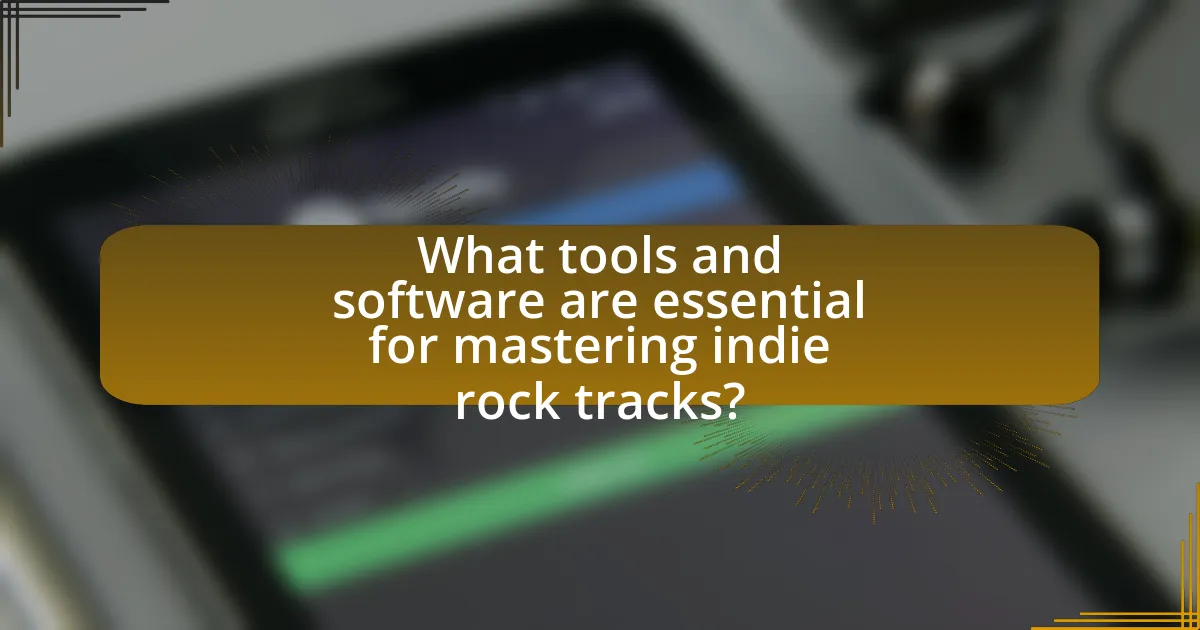
What tools and software are essential for mastering indie rock tracks?
Essential tools and software for mastering indie rock tracks include digital audio workstations (DAWs) like Ableton Live, Pro Tools, and Logic Pro, as well as mastering plugins such as iZotope Ozone, Waves L2 Ultramaximizer, and FabFilter Pro-L. These DAWs provide comprehensive environments for audio editing and mixing, while the mentioned plugins offer advanced features for equalization, compression, and limiting, which are crucial for achieving a polished sound. The effectiveness of these tools is supported by their widespread use in the industry, with iZotope Ozone being recognized for its all-in-one mastering capabilities, making it a popular choice among professionals.
Which digital audio workstations (DAWs) are best for mastering?
The best digital audio workstations (DAWs) for mastering include Ableton Live, Pro Tools, Logic Pro X, and FL Studio. These DAWs are favored for their advanced audio editing capabilities, high-quality plugins, and user-friendly interfaces that facilitate precise mastering processes. For instance, Pro Tools is widely regarded in professional studios for its robust editing features and industry-standard mixing capabilities, while Logic Pro X offers a comprehensive suite of mastering tools integrated within its platform. Additionally, Ableton Live is praised for its flexibility and real-time processing, making it suitable for both music production and mastering. FL Studio, known for its intuitive workflow, also provides effective mastering plugins that enhance audio quality.
What plugins are recommended for mastering indie rock music?
Recommended plugins for mastering indie rock music include FabFilter Pro-L2, iZotope Ozone, and Waves L2 Ultramaximizer. FabFilter Pro-L2 is known for its transparent limiting and versatile metering options, making it suitable for maintaining the dynamics of indie rock tracks. iZotope Ozone offers a comprehensive suite of mastering tools, including EQ, compression, and stereo imaging, which can enhance the overall sound quality. Waves L2 Ultramaximizer is widely used for its effective peak limiting and dithering capabilities, ensuring that tracks achieve competitive loudness without sacrificing audio quality. These plugins are favored by professionals for their reliability and effectiveness in achieving polished master tracks.
How can hardware equipment improve the mastering process?
Hardware equipment can significantly enhance the mastering process by providing superior sound quality and precision. High-quality analog gear, such as compressors, equalizers, and limiters, can add warmth and depth to audio tracks, which digital plugins may not replicate as effectively. For instance, using a high-end analog compressor can smooth out dynamic ranges and impart a unique character to the sound, resulting in a more polished final product. Additionally, hardware equipment often features superior converters that can improve the clarity and detail of the audio signal, ensuring that the final master retains the integrity of the original recording. This combination of enhanced sound quality and precision makes hardware equipment a valuable asset in the mastering process.
What are the best practices for preparing tracks for mastering?
The best practices for preparing tracks for mastering include ensuring proper mix levels, using high-quality audio formats, and organizing session files clearly. Proper mix levels should not exceed -6 dB to -3 dB to allow headroom for mastering adjustments. High-quality audio formats, such as WAV or AIFF at 24-bit/48 kHz or higher, preserve audio fidelity. Organizing session files with labeled tracks and consistent naming conventions facilitates a smoother mastering process. These practices enhance the overall quality and efficiency of the mastering stage, leading to a polished final product.
How should levels be set before sending tracks for mastering?
Levels should be set between -6 dB and -3 dB before sending tracks for mastering. This range ensures that there is enough headroom for the mastering engineer to work with, preventing clipping and distortion during the mastering process. Maintaining this level allows for dynamic range preservation and optimal processing without compromising audio quality.
What file formats are ideal for mastering sessions?
The ideal file formats for mastering sessions are WAV and AIFF. These formats are uncompressed and provide high audio quality, which is essential for the mastering process. WAV files, for instance, support a bit depth of up to 32-bit float and sample rates up to 192 kHz, ensuring that all audio details are preserved. AIFF files offer similar benefits, being a lossless format that maintains the integrity of the sound. Both formats are widely accepted in professional audio environments, making them the standard choice for mastering.
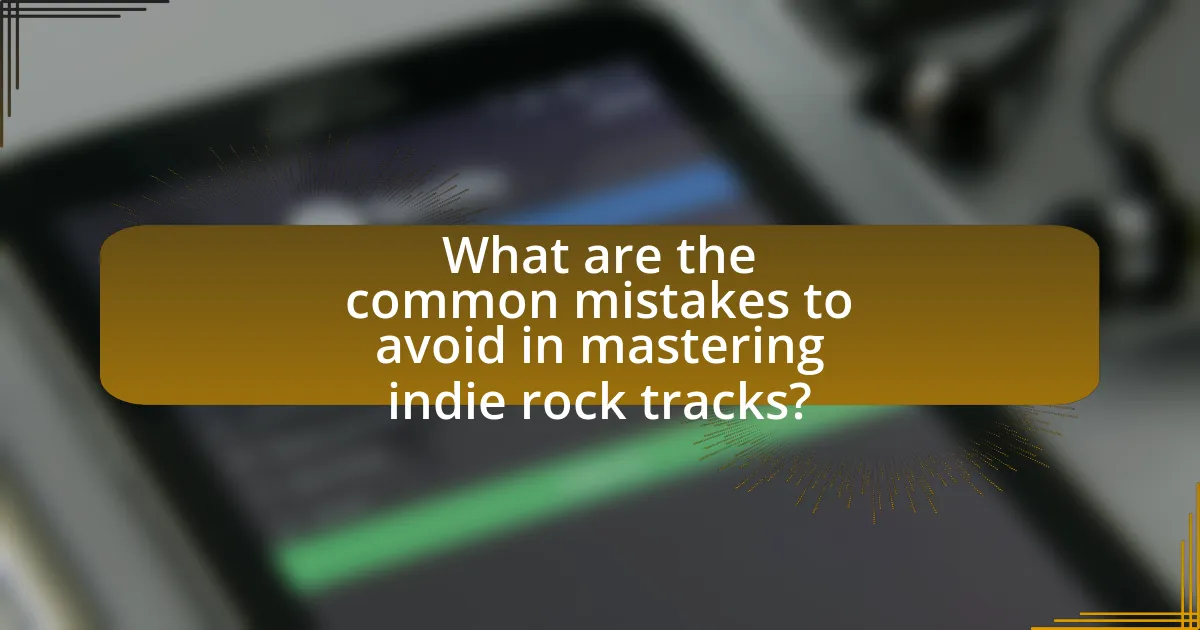
What are the common mistakes to avoid in mastering indie rock tracks?
Common mistakes to avoid in mastering indie rock tracks include over-compression, neglecting frequency balance, and failing to reference similar tracks. Over-compression can lead to a loss of dynamics, making the track sound flat and lifeless. Neglecting frequency balance may result in muddiness or harshness, which can detract from the overall listening experience. Additionally, failing to reference similar tracks can prevent the mastering engineer from achieving a competitive sound, as they lack context for loudness and tonal balance. These mistakes can significantly impact the final quality of the track, making it essential to address them during the mastering process.
How can over-compression affect the final sound?
Over-compression can negatively impact the final sound by reducing dynamic range and introducing distortion. When audio is overly compressed, the natural variations in volume are flattened, leading to a lifeless and monotonous sound. This flattening can cause important musical elements to become masked, diminishing clarity and detail. Additionally, excessive compression can create artifacts such as pumping and breathing, which detract from the overall listening experience. Studies have shown that music with a balanced dynamic range is perceived as more engaging and enjoyable, highlighting the importance of avoiding over-compression in the mastering process.
What are the signs of poor mastering quality?
Signs of poor mastering quality include a lack of dynamic range, excessive distortion, and imbalanced frequency response. A lack of dynamic range results in a flat sound that lacks impact, often caused by over-compression. Excessive distortion can occur when levels are pushed too high, leading to an unpleasant listening experience. An imbalanced frequency response may manifest as overly pronounced bass or treble, which can detract from the overall clarity of the track. These issues can be identified through critical listening and comparison with professionally mastered tracks, which typically exhibit a balanced sound and appropriate dynamic range.
What strategies can help achieve a professional sound in mastering?
To achieve a professional sound in mastering, utilize high-quality monitoring, precise equalization, and dynamic range control. High-quality monitoring ensures accurate sound representation, allowing for better decision-making during the mastering process. Precise equalization helps to balance frequencies, enhancing clarity and presence in the mix. Dynamic range control, through compression and limiting, ensures that the track maintains a consistent loudness without sacrificing dynamics. These strategies are supported by industry standards, such as the use of reference tracks to compare tonal balance and loudness levels, which can guide the mastering engineer in achieving a polished final product.
How important is reference listening in the mastering process?
Reference listening is crucial in the mastering process as it provides a benchmark for sound quality and tonal balance. By comparing a track to professionally mastered songs in a similar genre, mastering engineers can identify areas for improvement, ensuring that the final product meets industry standards. Studies show that using reference tracks helps in achieving a more polished sound, as it allows for objective evaluation of dynamics, frequency response, and overall mix clarity. This practice is widely adopted in the industry, reinforcing its importance in delivering high-quality audio.
What role does feedback play in refining the mastering process?
Feedback is crucial in refining the mastering process as it provides insights into how the final audio product is perceived by listeners. This input allows mastering engineers to identify areas needing improvement, such as tonal balance, loudness levels, and clarity. For instance, feedback from test audiences can reveal whether certain frequencies are overpowering or if the overall mix lacks cohesion. By incorporating this feedback, engineers can make informed adjustments, ensuring the final product meets industry standards and resonates with the target audience.
What are some practical tips for mastering your indie rock tracks?
To master indie rock tracks effectively, focus on achieving a balanced mix, utilizing proper EQ, and applying dynamic range control. A balanced mix ensures that all elements, such as vocals, guitars, and drums, are clearly audible and complement each other. Proper EQ helps to carve out space for each instrument, preventing frequency clashes; for instance, cutting low frequencies from guitars can enhance vocal clarity. Dynamic range control, achieved through compression, allows for a more polished sound by managing the loudness of various elements, ensuring that the track maintains energy without distortion. These techniques are widely recognized in audio engineering as essential for achieving professional-sounding masters.
